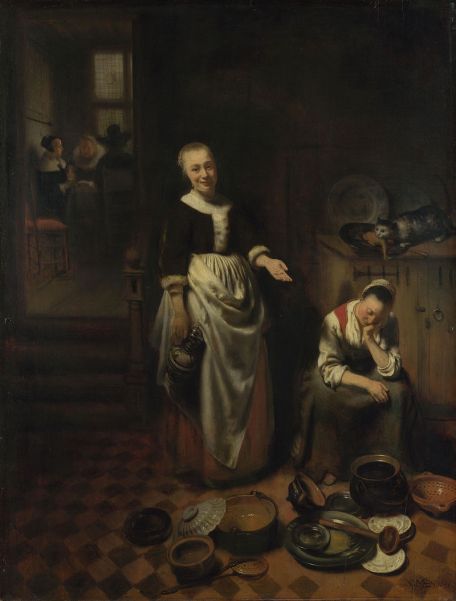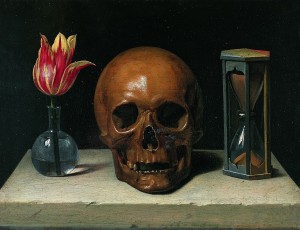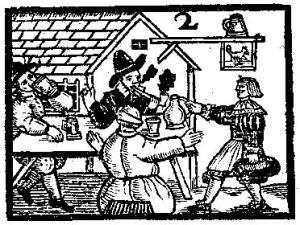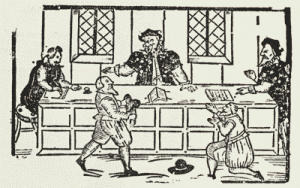It’s the start of a new year, and the start of what I hope will be a sustained revival for my blog. 2018 was a bit of a busy year, one which saw me writing and researching for my project on the history of facial hair, busy with lots of fab and fun media stuff, as well as taking up the full-time lectureship at Exeter. With all of that, my poor blog has been a bit neglected of late.
So, with my new year’s resolution firmly in place, time to make good and post the first of hopefully many for the 2019 blog season. And, to celebrate the publication of a new article on Welsh medical practitioners, I thought it might be nice to start the year off by returning to Welsh medicine with a nice little story from the archives (courtesy of my friend Dr Andy Croll in the University of South Wales).
In February 1907, an article appeared in the Weekly Mail, with the attention-grabbing headline ‘New Cancer Cure: Fame achieved by two Cardigan farmers’. The story centered upon two brothers, John and Daniel Evans, ships’ carpenters by trade. Brought up in the countryside, in the parish of Verwig near Cardigan, according to the article, ‘they studied the nature of herbs, gaining such proficiency that they soon became noted in their immediate locality, for cures effected of sores &c’.

(Image from The National Library of Wales Newspaper Database – https://newspapers.library.wales)
As their reputation grew, the brothers began to treat ‘graver cases’ of illness and, by the end of the nineteenth century, were treating external cancers. Their reputation had clearly spread far beyond Cardiganshire. By 1907 they claimed to be treating patients not only from all across Wales, but from London and other parts of England. Not only this, offers of fees were flooding in from patients across the country, asking the brothers to attend them at their own homes, but these were refused by John and Daniel, who said they were already at full stretch at Cardigan ‘where the numbers of patients who visit them is very considerable’.
When asked how many they had cured, the brothers replied that many hundreds had been sent away restored, with only two patients lost. With the successes that they had apparently had, John and Daniel Evans had now turned to treating internal cancers which, it was reported, was already yielding good results. Despite having once been offered the enormous sum of twenty thousand pounds to effect a cure (which they refused), there was no formal charge, and patients were simply asked to pay what they could afford, or what they felt was a suitable amount.

(Image from The National Library of Wales Newspaper Database – https://newspapers.library.wales)
According to the report, several hospitals, including London, Cardiff and Liverpool were even sending patients to Cardigan to be treated by the brothers, when the medical faculty acknowledged that there was no more that they could do. By the early twentieth century they were also selling their own medicinal compound, based on a secret recipe, known as the ‘Cardigan Cancer Cure’.
In their studies of herb lore, the Evans brothers belonged to a long tradition in Welsh (and indeed broader) medical history, of self-taught proficiency in healing. Although not referred to as such in the article, they were, essentially, ‘cunning men’ – popular practitioners who gained local reputations as specialists in particular conditions, or more generally as lay healers. Cunning folk, bonesetters, healers and charmers were undoubtedly an important element in medical provision in Wales throughout the early modern period, and well into the nineteenth century. Reputation was often the single most important factor in the popularity of such people, whose fame grew along with the numbers of apparent cures and subsequent recommendation.
The language of the article indeed reveals many echoes of reports of popular healers from centuries before. It noted, for example, several cases of patients who had been referred to the Evans brothers after being written off as incurable by the medical profession. In the seventeenth century, popular healers often claimed to succeed where medicine had failed, or where the patient had been ‘given over’ by physicians. The emphasis on charity and, if necessary, treating the poor gratis, was another important element of the cunning man’s practice – and also a popular trope in medical advertising in the early modern period and eighteenth century. The fact that that John and Daniel were brothers also fitted in with dynastic or family traditions of healers that was common in Celtic countries, and especially in Ireland, but also in Wales.
Perhaps most interesting, though, is the surprisingly uncritical tone of the Weekly Mail’s report. By the end of the nineteenth century, the earlier traditions of folk medicine were of great interest to Victorian antiquarians, who collected records of charms, remedies and practices. Whilst some were sympathetic to early healing practices, others took the chance to poke fun, taking to the pages of newspapers, journals and society ‘transactions’ to highlight the ‘weird’, ‘backward’ or ‘ignorant’ medicine of their predecessors. Here, however, the article apparently accepted the validity and success of the brothers’ treatments, neither making fun of their methods or beliefs, or treating the herbal basis of their practice as inferior to ‘official’ medicine.
But there was an unfortunate twist in the tale. Keen to stamp out what it saw as quack medicines and arcane practices, the British Medical Association summonsed the Evans brothers to London and denounced them as frauds. They apparently returned to Wales distraught and disillusioned, abandoning both their practice and the medicine soon after.

The BMA headquarters in Tavistock Square, London – Image from https://peopleshistorynhs.org/encyclopaedia/the-british-medical-association/)
The example of the survival of traditional healing in Wales demonstrates the longevity of what is sometimes (unsatisfactorily) referred to as ‘folkloric’ medicine, despite the growth of hospitals in Wales at the time, and the overwhelming shift towards biomedicine. But as the reaction of the BMA shows, there has long been a tension between what we might call ‘official’ and ‘lay’ or popular medical practices. As the popularity of the Evans brothers’ treatments suggests people across the country, and not just in Wales, were perfectly ready to consider alternatives where biomedicine had apparently failed them…a willingness which, it could be argued, is no less potent today, with the availability of a vast range of alternative therapies and treatments.
Whatever the truth behind their methods and successes may be, the case of the Evans brothers of Verwig reminds us of the dangers of viewing the history of medicine as some long journey of progress out of darkness and into some sort of modern medical enlightenment. The reality is often far more complex.




























